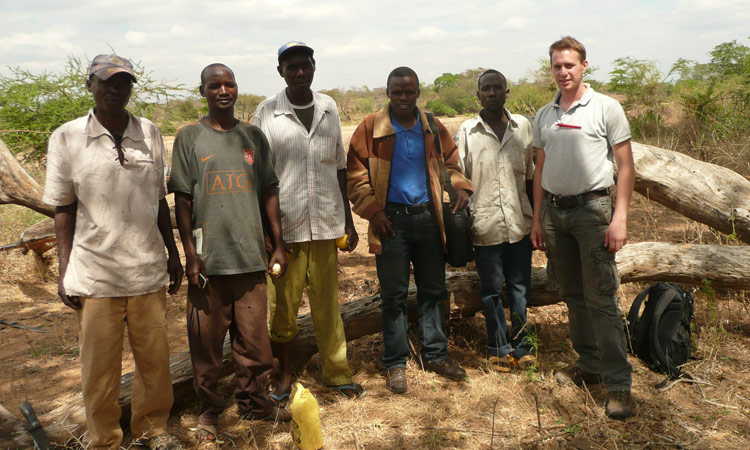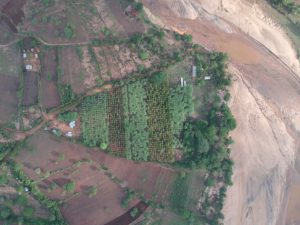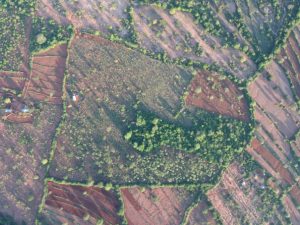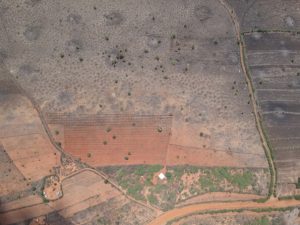About
About Africa Wood Grow
Roeland Lelieveld (Dutch) and Daniel Muvali (Kenyan) started Africa Wood Grow (AWG) in 2010 after 5 years of study and research. They first met each other in the autumn of 2005. Roeland was immediately impressed by Kenya and the opportunities the country has to offer.

Together with Daniel he shared the desire to start a forestry project. They were guided by the desire to support the region where few resources are in place. It’s their higher purpose to develop economic activities in the region as a whole. After five years of research and raising funds the day has finally come, the shared vision was rapidly put into practice.
Farm Locations
AWG is operating 4 farms and our foundation is working together with many local farmers. The pictures below show the status of our farms in November 2018 with links to extremely high resolution photos of each farm.
Kathome Farm
9 acres, fully planted
The Kathome farm is our first farm which we started in 2010. The farm includes a nursery, visitor building, solar power electricity and good access to the river.
![]() Location: -1.5619266, 37.8800358
Location: -1.5619266, 37.8800358
Umu Farm
23 acres, 60% planted
The Umu farm is nicely located near mount Umu, with great views of the area. The farm was started in 2013 and tree planting is almost completed.
![]() Location: -1.5907648, 37.856454
Location: -1.5907648, 37.856454
Kamutai Farm
40 acres, planting started
Kamutai farm is our biggest farm. Construction work like housing is completed. Fencing is almost ready. Tree planting from November 2018 is hoped to prove successful.
![]() Location: -1.9058527, 38.0099568
Location: -1.9058527, 38.0099568
Mbumbu Farm
9 acres, planting started
Mbumbu farm was acquired in 2018. All construction work such as housing and fencing is in place. Tree planting has been started in November 2018
![]() Location: -1.5767072, 37.8601925
Location: -1.5767072, 37.8601925
Mission and Vision
Mission
- Work towards improved soil and water conservation and management through water harvesting, storage, recharge and reuse.
- Utilize locally available resources and develop new technologies for sustainable use and management of the environment.
- Disseminate technologies to communities for equitable development and sustainable use of natural resources.
- Empower communities through exchange of knowledge and capacity building so as to improve and diversify their livelihoods.
Vision
- Become a leader in providing forest related goods and services through ecologically and environmentally sustainable systems.
- Quantitatively and qualitatively lead to increased food security and health and nutrition through proper use of soils and water.
- Be a leader in service delivery through collaborative efforts of research and development, partnerships and management and establishment of forestry and agroforestry systems.
- Be among the lead companies that work toward healthy environments through proper natural resources management and conservation.
Corporate Social Responsibility
|
AWG is working closely with the local communities through resource management and development programmes whereby the communities are trained on how they can manage and utilize their resources sustainably. We empower the communities through training them on the right agroforestry components and systems that will lead to improved food, non-wood and wood products. |
|
Secondly, diversifying production systems and income sources for local communities will increase environmental sustainability and resilience. Joint tree planting programmes in schools, hospitals, and towns help in uniting the communities together and increasing tree cover, while ameliorating microclimates in those areas. |
Future plans
Fish Farming
In 2014 we have a plan to start fish farming in the region. Fish has become very expensive and many people have no access to cheap animal protein. Farmers can develop small fish ponds at their homesteads as a way of increasing their protein ration especially during the dry and drought period when they rare have no protein components in their meals. Communities grow vegetables along river banks that are eaten with maize rations provided by the government as relief. It is cheaper and easier to practice fish farming than keeping goats and cattle that die in every dry season due to diseases and lack of pasture. It also takes a small area to keep fish that livestock.
Agricultural Tourism
AWG works with environmental volunteers who have adopted trees on farms and to increase forest cover in the region. These volunteers possess the trees and are maintained for them. We are in a process of establishing a volunteer tourism where those who adopted the trees will visit the farms and the surrounding communities to train them on environmental conservation and natural resource management. We invite the communities around us to embrace the idea so that in collaboration with schools, universities other stakeholders and partners can provide trainings to farmers on conservation, alternative production technologies and biodiversity enrichment and conservation.
Tree Production Technologies
and Research Centre
Most of tree species of importance need advanced technologies for production. For example, it can take years for the Mukau (Melia volkensii) seeds to germinate if not extracted from the nuts. Other species such as Terminalia brownii require special attention or treatments for them to germinate. We are in the process of collaborating with research institutions to see how the technology can be improved and disseminated to farmers. These tree species can grow in wide climatic zones of Kenya and thus can help mitigate impacts of droughts and poverty. Research is also needed for carbon sequestration purposes and to know which tree species is the best for this activity. We are at the moment trying the available technologies through field trials, data collection and documentation (water demands, seasons of production and ripening, growth rates and habits etc.), market survey, consumer surveys, baseline surveys and income proxy surveys in order to assist our in future project implementation.
Livestock Keeping
AWG has few bulls that are used for minimum tillage on the farm. The trees are young and we are in the process of abandoning crop farming on this plot of land and introduce livestock. This will run till the trees are removed from the farm. The plan is to buy steers and fatten them with a year or so then sell them back.
Fertilizer Production
Farm waste products, crop residues and animal wastes will be used to produce fertilizer through conventional compositing and industrial production. Saw dust will add value to the bulk of fertilizer needed at local level. Chemical fertilizer has become too expensive to a common farmer and is also a problem to soils in the dry area where rainfall is minimal hence farming without fertilizer application has led to soil degradation since crop residues are used for feeding animals. Fertilizer from organic materials will be made so that farmers can get is cheaply.
Timber Production
AWG is aiming at producing high quality timber (African mahogany) from Melia volkensii, Melia azadirachta and Azadirachta indica. Trials are on near Kitui and we intend to fill the 20 acres with these three species with a rotational age of 10 years. For environmental conservation, other species are grown as hedgerow and stream buffers while the trees for timber production are on alley systems.
Seed Orchards
Trees species in the ASAL (Arid and Semi-Arid) areas of Kenya are becoming extinct due to over utilization for timber, wood fuel, artisanal value (carving), and overgrazing. Seeds of some species are becoming rare to find and this is why we are planning to establish seed orchards for these endangered species. Such species considered for our seed orchard include Melia volkensii, Dalbargia melanoxylon, Terminalia brownii, Terminalia brunoides,Vitex payos, Kigelia africana, Berchemia discholor, Sclerocarya birrea (marula), and Erythrina abyssinica.



